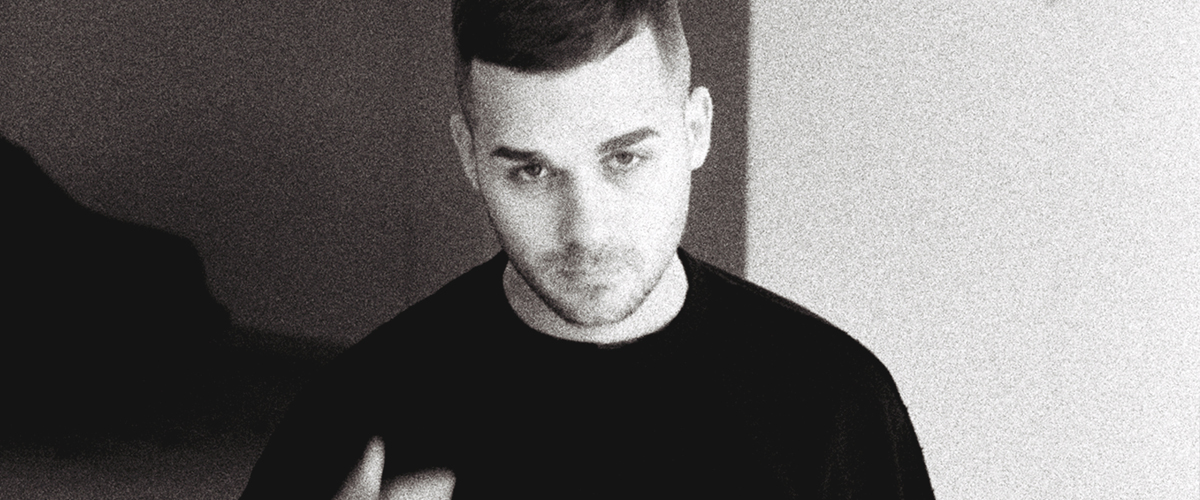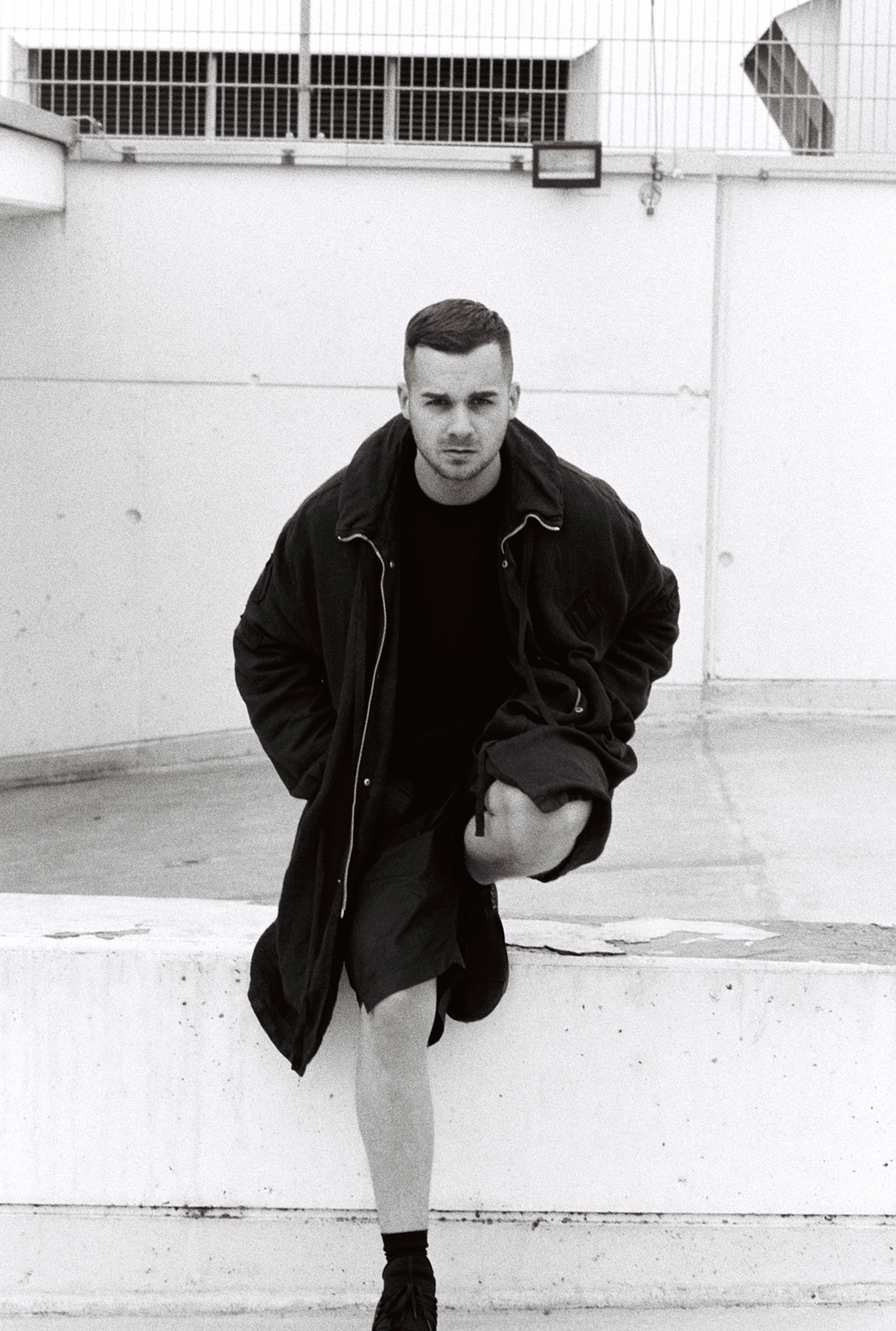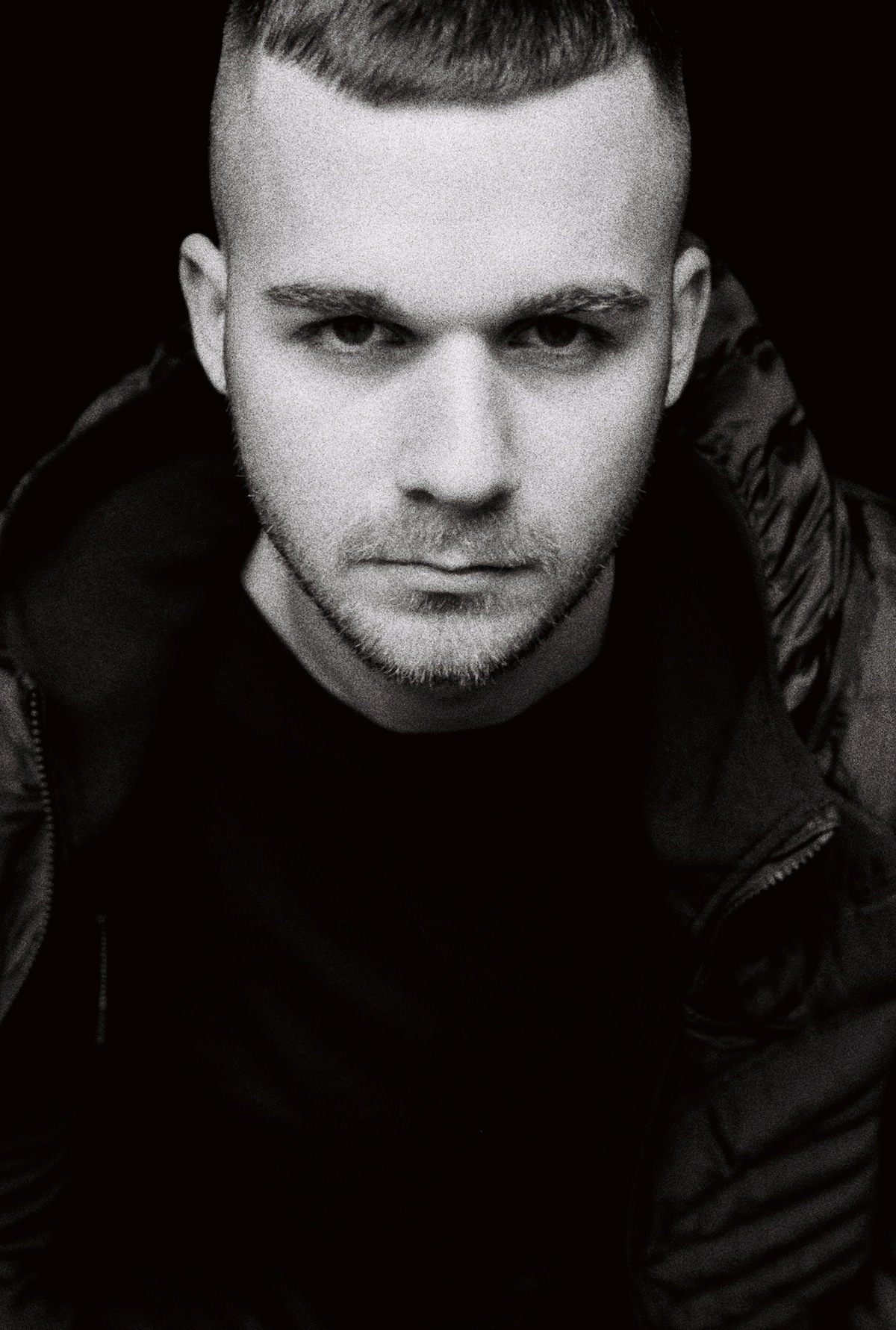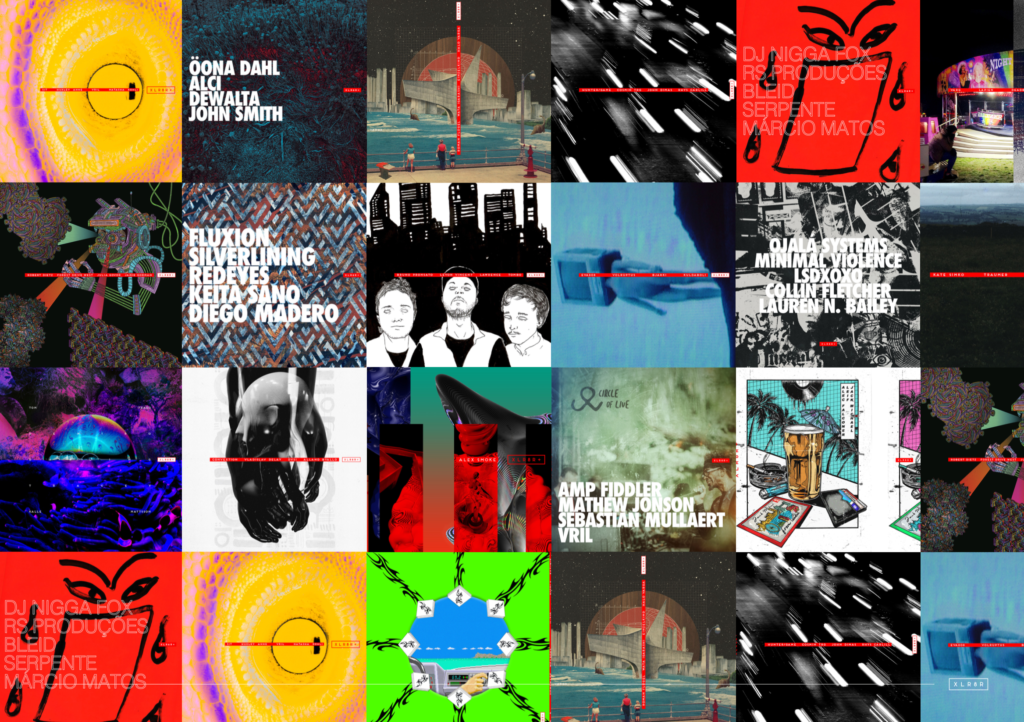Interview: Kobosil
With his debut album on the way, the Berghain resident reveals the production processes behind it and discusses his rapid ascent.

Interview: Kobosil
With his debut album on the way, the Berghain resident reveals the production processes behind it and discusses his rapid ascent.

This certainly won’t be the last feature you read on Max Kobosil. Following a Barker & Baumecker remix and the release of his debut EP in the early summer of 2013, his profile has been on the rise. Quick recognition of his raw, though undeveloped, musical abilities by Ostgut Ton opened the door to a twelve-inch on its Unterton sublabel, as well as his first DJ booking at Berghain less than one month later. The widespread reception of his sets had earned him a residency before the year had even reached a close.
Now, at just 24 years old, there’s a growing expectation on the young German’s shoulders—more so given the uncompromising quality of his recent works, including November’s 91, an intense and gloomy four-tracker that many rank among Ostgut Ton’s finest EPs of recent times. Given such early success, it’s only natural that comparisons with the likes of Answer Code Request and Marcel Dettmann, both of whom have trodden a similar path, will be drawn, but Kobosil says he is focused only on carving his own identity. With the release of his highly anticipated debut album, We Grow, You Decline, scheduled for January 29, Kobosil sat down with XLR8R to offer his thoughts on the album, as well as his ascendance and the inevitable pressures that accompany it. It was a frank and candid conversation.
In many ways, We Grow, You Decline can be can be seen as an landmark in Kobosil’s blossoming affinity with Ostgut Ton. His work—both his powerful dancefloor-friendly techno and his hypnotic productions—is a perfect fit for an establishment that has long been one of the key cornerstones in the global house and techno scene. Some would chalk his success down to talent alone, but listening to his tales of how the connection came into fruition leaves one with a fuller sense of the scope of his ambitions, and a feeling that there were larger forces in play.
“Of course I’ve been lucky—but it sometimes feels a bit like destiny,” Kobosil explains. The relationship can be traced back to October 2009, when he first visited Berghain at the age of just 18. “As soon as I went in, I was just amazed,” he recalls. “I immediately knew that I couldn’t just be a dancer—I knew I had to be part of Ostgut and play there!” Having uploaded a number of early demos via his personal SoundCloud page, he actually turned down two label deals in the knowledge that he had not yet defined his direction, and that this could eventually jeopardize his chances of joining the Ostgut roster. “It was a crazy move, but I knew what I wanted,” he says. “Before you release on a big label, it’s really important that you’ve discovered your own sound. Releasing the wrong music on the wrong labels blurs your identity.” His late teenage years were spent living with Nitam and Somewhen—two promising artists in their own right— learning to DJ and produce with Ostgut firmly in their sights.

But perhaps the most compelling revelations come a bit further down the line. Growing up in Neukölln, a district in South Berlin, Kobosil was encouraged to take a bachelor of arts program in audio production by his father, who envisioned him finding a job in the more traditional sense. “But my mum was always encouraging with my own musical ambitions,” Kobosil recalls. Just months before his graduation, towards the end of 2012, he then dropped out of school without finishing his bachelor exam, because he felt the time was right to begin prioritizing his music.
The reward for his bravery came just a few months later when Ostgut Ton announced they were releasing his 2013 interpretation of Barker & Baumecker’s “Silo” as part of a remix package—an opportunity that itself arrived draped in fortune. Having asked Andy Baumecker for the parts to edit, the track was only added because one of the original four remixers failed to deliver on time. “Artistically, if you have the feeling that you’re ready then you have to do it—you can’t wait until you’ve finished your thesis paper,” Kobosil explains. “I just had this feeling inside that it was the right thing to do.” In line with this, his first booking at Berghain only arrived when a slot originally intended for Ryan Elliott became available at late notice. Three months later, he was invited to join the Ostgut Ton booking agency—although he thought about playfully declining as a joke.
Discussing the album’s production, Kobosil explains that the process started in February last year when he revisited some experimental sketches dated pre-2013. “I just thought they were interesting, and so decided to finish them off,” he says. Feeling inspired, he committed himself to the studio until early May at which point he delivered the material to the label. “It was an entirely immersive process,” he explains. “My ideas for the album just began to take shape and I felt ready to finalize them.”
As with all his productions, the album’s tracks were completed very quickly—“The main part is normally ready in 30 minutes; if it takes more than an hour then I have to stop”—but the challenge was finding the initial concept or inspiration. “A lot of tool techno tracks don’t have a soul— but music captures feelings, and I always leave a small part of me in each of my tracks,” he says. “There is a very specific mood behind each one.” To give an example: “When I Speak” can be traced back to when Kobosil was informed that a the swelling in his gland may actually have been cancerous—which was fortunately not the case. “But I will never forget when the doctor said, ‘This could be a tumor’,” he recalls. “The track captures my emotions from that time of uncertainty.” The same principle, he says, applies universally to all of his productions.
We Grow, You Decline is an extremely commendable long-player—whether it scales the same heights as the classic Ostgut Ton debuts remains an open question, but there is little questioning the quality of the work. The actual concept, however, remains largely undisclosed. The title, Kobosil explains, is a homage to the new wave of artists, such as himself, who are steadily finding acclaim—“Electronic music is growing within youth culture, while the other genres are declining” —but the specific reasoning behind the artwork and track names are secret until further notice. “For me, the tracks are only 50 percent of an album,” he says. “The whole package, including the pictures and the titles, provides a context for the release.” His DJ-producer friends, including Marcel Dettmann and Patrick Gräser (a.k.a Answer Code Request), were not allowed to hear anything until just recently, long after the album’s completion. “I wanted to wait until I had finished the whole product,” he says, ” because that’s a totally different experience to receiving a bunch of files with working titles.” For advice, he selected only a few long-term friends. “I wanted people who were honest” he says. “I wanted people who know me as Max, not as Kobosil.” 2016 will also see the release of a limited edition vinyl edition containing a text that, when decoded, details the inspirations behind the individual track names and artwork.

Shifting through Kobosil’s modest discography, it’s hard to overlook the pronounced diversity in his style. Although there is an alluring darkness laced through it all, it is possible to divide his productions into two categories: techno, and ambient or drone. Tracks like 2014’s “Head”or “1018818” are distanced considerably further from the club than any of his releases on Ostgut Ton or Marcel Dettmann’s MDR. He reserves his more experimental productions for his own RK label, while sending those that fall into the former category elsewhere. “For my releases on MDR, I have always worked with Marcel [Dettmann]; and when I release on Ostgut, I always work with them. But for my label, it’s just my stuff,” Kobosil says. “Looking back at my records, I am especially happy with those on my own label, even though they were more under the radar,” he adds.
Capturing this versatility on the album was an essential consideration during the production process. Although it will be released via Ostgut Ton, Kobosil explains that he was at complete liberty to produce a record that he feels best represents his work. “We Grow, You Decline” was different [from the EPs] because it’s more personal,” he says. “The label didn’t get too involved.”
The outcome of this autonomy is an 11-tracker that features a wonderful variety of tempos, as Kobosil attempts to capture both sides of his artistic character. Relentless dancefloor pieces like “Aim For Target” are delicately sandwiched in between more down-tempo, experimental tracks like “The Exploring Mountain” and “Eihwaz.” “I didn’t include just ambient material because I wanted some tracks that would work in a club-related context, where I am coming from,” he explains. “I wasn’t interested in a plain techno album. I wanted to make a record that could be listened to and enjoyed at home, but not bore you. You should be able to talk to friends at the same time, and have a drink, that sort of thing.”
“If I was only producing floor-friendly tool techno, then I wouldn’t feel like I am meeting my artistic ambitions. I’ve always wanted to be more than that.”
To understand the motivations behind this sonic diversity, it is necessary to consider Kobosil’s long-term objectives as a producer. Although unquestionably youthful, there is no masking the maturity in his character, and given his recognition at such a young age, he would be forgiven for overindulging in the fruits of success and becoming a bit distracted. But Kobosil’s vision remains quite clearly defined, if still in maturation: He has, he says, long harbored the ambition of becoming a “proper electronic musician.” “If I was only producing floor-friendly tool techno, then I wouldn’t feel like I am meeting my artistic ambitions. People from other generations and scenes might feel that it’s just straightforward [makes drum noise] music, where people take drugs and stuff. I’ve always wanted to be more than that,” he continues. Offering an example, he explains that Alva Noto’s ability to bring an artistic element to a notoriously hedonistic environment is an achievement that he one day wishes to replicate. “He is a true artist because his music is creative,” Kobosil explains. “It appears he is very selective with his shows, and will also play some sets to a sit-down audience.”
Closely linked to this endeavor is management of his bookings. Having first joined the Ostgut roster over two years ago, the combination of his skills and new associations with the famed imprint have been been sufficient to earn him requests the world over, and the quality of the new album and the consequential growth of his profile are likely to see demand rise further. Curation of his touring schedule, both in terms of frequency and type of shows played, will become an increasingly important task if he is to carve the profile that he desires. As Kobosil explains, the decisions that he makes will determine his reputation. On the issue of frequency, overloaded touring schedules aren’t conducive to creativity and studio productivity, and there is no shortage of affiliated artists whose output has suffered as a result. Although he originally started as a DJ—his flatmate, Somewhen, advised him on production in return for beat-matching lessons—Kobosil intends to maintain a focus on the studio.

“I really want to make more, and better, music,” he says. That’s my biggest aim.” He reveals that he has to be “very selective” about where he plays. “I am fortunate enough to have a clever, intelligent following who appreciate what I am trying to do, but if I begin chasing the money and playing big festivals with the wrong crowds, then this will change very quickly.” He adds that he is working with his booker to get involved with experimental events, both with his DJ and live sets. “I want to be able to spin records for 14 hours at Berghain. but also maybe play shows with more of a concert vibe,” he says. As more and more money is thrown at him, the temptation will grow—but his focuses today remain untainted.
“The concept of flying around the world to play techno is still strange to me.”
It’s a remarkable situation in which Kobosil currently finds himself—and at times, it’s clear that even he is coming to terms with it. “The concept of flying around the world to play techno is still strange to me,” he says, laughing. In the space of just over two years, he’s achieved much of what he set out to do, already carving himself a sonic identity in what is an increasingly saturated market; in one of his recent podcasts, an untitled track of his was correctly identified as his own. But with an ever- growing fanbase and acclaim comes great pressure and expectations—something to which Kobosil concedes he is still adapting. “At the beginning, you only receive positive feedback because it’s only people who are interested in you who say anything,” he explains. “But this changes as you get bigger because suddenly everybody feels the need to comment—minus the positivity,” he continues. Above all else, dealing with these negative comments is something that I must learn.”
It’s obvious from our conversation that he is heavily critical of his own work. He recalls how a single comment about an album track drove him to replay it several times in an attempt to determine the feedback’s legitimacy. Central to overcoming such psychological hurdles are his close friendships, almost all of which have been in place for many years. He explains that establishing similar relationships can sometimes be difficult given his status today. “Some people that I meet aren’t honest with me because they want me to play their tracks or do a remix,” he says. The knowledge that he has support from key figures in the scene, including the team at Ostgut Ton, is central, he says, to overcoming the challenges that accompany his success.
There’s no denying Kobosil’s deep-rooted ambition, and he deserves credit for what he has accomplished. Despite this, however—and even accounting for the professional nature with which he approaches his work—there is still a lot to learn and many things to achieve. 2016, he says, will be marked by the release of the album and further development of his live set—and after that, he is unsure. But given his route thus far, he is blessed with no shortage of role models, many of whom have overcome similar challenges and gone on to write themselves into techno folklore with their output over the course of the past decade. Despite his undeniable modesty, Kobosil explains that he is eyeing similar pastures. “I want to be a DJ and live act with a wide production catalog that is both artistic and sounds great in a club,” he explains. “But I am still super young, and there’s still a lot to do,” he says. Chapter one, however, is now almost complete.
All photos: Sven Marquardt
Support Independent Media
Music, in-depth features, artist content (sample packs, project files, mix downloads), news, and art, for only $3.99/month.

